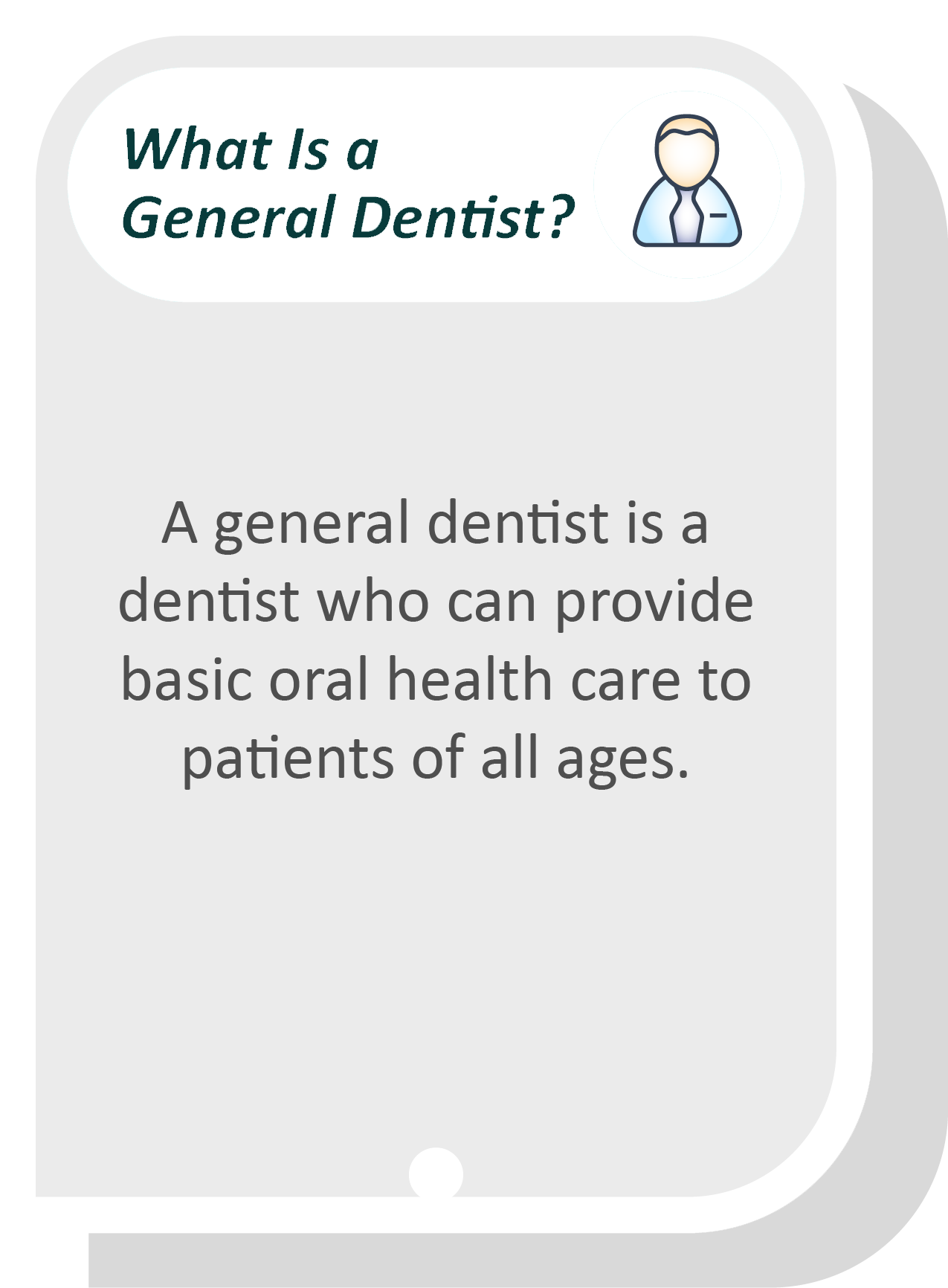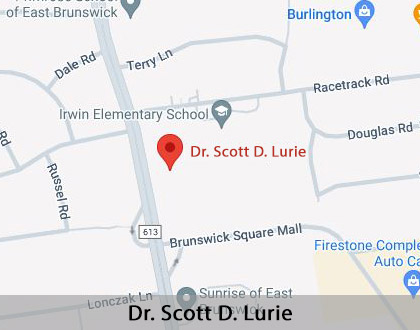General Dentist East Brunswick, NJ
Regular visits to a general dentist are essential to maintaining oral health and overall well-being. A general dentist is a qualified provider of essential dental care for patients of all ages. These dental professionals can help prevent dental diseases and educate people on practicing good dental hygiene at home.
Receive quality, comprehensive care from a general dentist at Dr. Scott D. Lurie in East Brunswick and the surrounding area. Our team can help keep your smile beautiful and healthy. Call us today at (732) 227-4814 to learn more about our services or schedule an appointment.
Finding the Right Fit
A general dentist is a primary care dental provider that focuses on the prevention of disease. These dental professionals can diagnose, treat, and manage a patient's overall oral health care needs. They also encourage good oral health and hygiene to help people avoid the progression of oral diseases.
Finding the right dentist is crucial as they can teach patients ways to maintain oral health, treat certain dental issues, and help patients get more advanced care when they need it. Working with a compatible general dentist will improve a patient's well-being in the long run. Our team acts as a partner to help maintain each patient's oral and overall health.
“A general dentist is a primary care dental provider that focuses on the prevention of disease.”
Types of Services the General Dentist Performs
Unlike dental specialists who focus on a particular aspect of dentistry, general dentists provide a range of services that are vital to continued health. According to WebMD, these general dental practitioners provide primary dental care to diagnose, treat, and meet patients' oral health needs. Most of the care that general dentists provide is preventative.
Preventative care is key to helping patients maintain oral health and may include routine dental check-ups and education on proper oral hygiene techniques and nutrition. General dentists may also offer certain restorative services to fix damaged or decayed teeth and restore their function. Some cosmetic treatments may also be available to improve the appearance of a smile. Patients should contact our team to learn about our available services.
“Preventative care is key to helping patients maintain oral health and may include services such as routine dental check-ups and education on proper oral hygiene techniques and nutrition.”
General Dentist Qualifications
General dentists are qualified to take care of patients of all ages. This makes them a convenient option for parents who would like the whole family treated at one practice location. Children and adults should have regular dental exams at six-month intervals to encourage good oral health. Depending on their oral health status, some patients may need to have dental appointments more often.
Dentists list their postgraduate degrees after their names as a way to identify their credentials. Most dentists are listed as DDS, which stands for Doctor of Dental Surgery. Other dentists have the credentials DMD, which is the Doctor of Medicine in Dentistry or Doctor of Dental Medicine. Although the names are different, both DDS and DMD are postgraduate degrees that require an additional four years of training at an accredited dental school.
“General dentists can take care of patients of all ages.”
Check out what others are saying about our dental services on Yelp: General Dentist in East Brunswick, NJ
The Difference Between DDS and DMD
Children of all ages can have regular dental appointments with a general dentist. Although it might seem early, the sooner children have regular dental checkups, the healthier their mouths will stay throughout their lives. These check-ups help prevent cavities and tooth decay, which can lead to pain and other complications.
Asking questions during appointments with a general dentist is an important part of long-term healthcare. Patients can ask questions about the frequency of check-ups, best oral hygiene practices, and preventing tooth decay and other problems. Dental health varies for each patient. Our team works with each patient to determine the best way to meet their needs.
“Children of all ages can have regular dental appointments with a general dentist.”
Questions Answered on This Page
Q. Why is it important to find the right general dentist?
Q. What services does a general dentist provide?
Q. Who is a general dentist qualified to treat?
Q. What is the difference between a DDS and a DMD?
Q. When will a general dentist refer someone to a specialist?
People Also Ask
Q. Why is routine dental care important?
Q. How can a person's diet help with tooth decay?
Q. How can someone find out what procedures their dental insurance covers?
Q. Why do I need my wisdom teeth or other teeth removed?
Q. What kind of pain can be addressed by a root canal treatment?
Referrals From a General Dentist
General dentists receive comprehensive training for a range of treatments. However, they do not have the experience or training to treat more specialized dental problems. Even if a general dentist cannot treat the issue directly, they can still help diagnose a patient and refer them to the appropriate dental professional. Some problems that may require a referral include:
- Crooked teeth
- Gum disease
- Jaw misalignment
- Root canals
- Tooth replacement
“Even if a general dentist cannot treat the issue directly, they can still help diagnose a patient and refer them to the appropriate dental professional.”
Frequently Asked Questions
Q. What does a general dentist do?
A. A general dentist is a primary healthcare provider that manages a person's oral health care needs. General dentists perform many preventative procedures, such as professional teeth cleaning and oral exams. A general dentist may also offer cosmetic and restorative services.
Q. Why does a general dentist need a family health history?
A. A medical and family history of diseases can help a general dentist be aware of symptoms that could affect a patient's dental health. Some dental problems are genetic. Past medical problems can affect current dental treatment.
Q. Can a general dentist help me if I have not seen a dentist in a few years?
A. Yes, everyone can benefit from seeing a general dentist, even if it has been a while since their last appointment. According to a 2019 CDC report, only 64.9% of adults aged 18 and over had a dental visit in the past year. If it has been a while since a patient's last check-up, our team will develop a personalized plan to get their oral and dental health back on track.
Q. If I am not having problems with my teeth, do I still need to see a general dentist?
A. Yes, adults should have at least an annual visit with a dentist for an exam to look for problems that a dentist can identify. Changes in general health often affect the teeth, but it may not happen right away. By keeping appointments with a dentist, patients get continuity of care that allows a dentist to notice changes in the mouth and teeth.
Q. Why is it important to feel comfortable with my general dentist?
A. Dental treatment is important and personal. Patients who are comfortable with their dentist will feel more at ease and less hesitant to seek treatment. Having a good relationship with a dentist helps patients stay on track to maintain good oral health.
Dental Terminology
Call Us Today
A general dentist offers comprehensive dental care to maintain healthy teeth at any age. Our team at Dr. Scott D. Lurie can provide you with the dental care you deserve. Call us today at 732-227-4814 to schedule an appointment or learn more about our services.
Helpful Related Links
- American Dental Association (ADA). Glossary of Dental Clinical Terms. 2024
- American Academy of Cosmetic Dentistry® (AACD). Home Page. 2024
- WebMD. WebMD’s Oral Care Guide. 2024
About our business and website security
- Dr. Scott D. Lurie was established in 1997.
- We accept the following payment methods: American Express, Cash, Check, Discover, MasterCard, and Visa
- We serve patients from the following counties: Middlesex County and Monmouth County
- We serve patients from the following cities: East Brunswick, Spotswood, Monroe Township, Old Bridge, Milltown, North Brunswick, South River, Edison, Manalapan and Marlboro
- National Provider Identifier Database (1851463863). View NPI Registry Information
- Norton Safe Web. View Details
- Trend Micro Site Safety Center. View Details
Back to top of General Dentist















